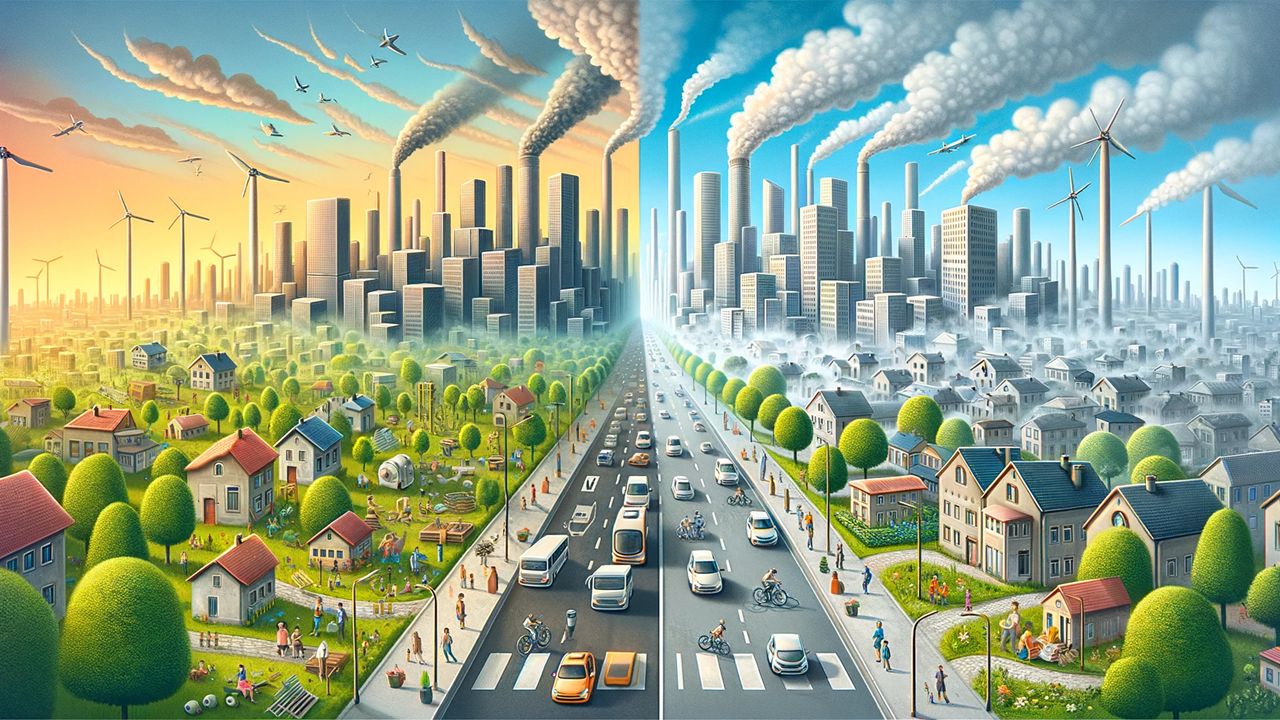Urban Air Quality Management: Policies and Technologies for Cleaner Cities
In the quest for healthier urban environments, cities worldwide are adopting innovative policies and technologies to improve air quality. This article explores the multifaceted approach to managing urban air pollution, highlighting key strategies and advancements that promise cleaner, more livable cities for future generations.

In the heart of bustling cities, where the rhythm of commerce, transportation, and life itself intertwines, a silent challenge persists—maintaining clean air. Urban air quality management has emerged as a critical area of focus for municipalities, policymakers, and citizens alike. It is a complex issue, influenced by a web of factors including industrial emissions, vehicular pollution, and even geographical and meteorological conditions. However, the concerted efforts of global communities to deploy innovative policies and technologies are lighting the path toward cleaner, more sustainable urban environments. This article delves into the essence of these endeavors, exploring how cities can and are becoming beacons of air quality improvement.
Understanding the Gravity of Urban Air Pollution
The significance of managing urban air quality cannot be overstated. According to the World Health Organization, air pollution is a major environmental risk to health, contributing to respiratory infections, heart disease, and lung cancer. In urban settings, the dense concentration of vehicles, industries, and human activities exacerbates the challenge, making effective management not just beneficial but essential for public health and environmental sustainability.
Policy Instruments for Cleaner Air
Policy-making plays a pivotal role in urban air quality management. Governments and city administrations employ a range of regulatory and economic instruments designed to reduce pollutants and encourage cleaner practices.
Regulatory Measures: These include emissions standards for vehicles and industries, zoning laws to control the location of polluting facilities and restrictions on the use of certain fuels in urban areas. For example, Low Emission Zones (LEZs) in cities like London and Berlin restrict access to parts of the city for the most polluting vehicles, encouraging the use of cleaner modes of transport.
Economic Incentives: Tax incentives for electric vehicles, subsidies for renewable energy installations, and pollution taxes are examples of economic tools aimed at promoting environmentally friendly practices among individuals and businesses. Such measures not only discourage pollution but also foster innovation in clean technology.
Technological Innovations for Air Quality Improvement
Technological advancements are at the forefront of the fight against urban air pollution, offering new solutions for monitoring, reducing, and preventing emissions.
Air Quality Monitoring Systems: Modern cities are increasingly utilizing sophisticated air quality monitoring systems that provide real-time data on pollutant levels. These systems employ sensors distributed across urban areas to collect data on a variety of pollutants, enabling targeted interventions and public awareness.
Clean Transportation: Electric and hybrid vehicles are becoming more common, supported by improvements in battery technology and charging infrastructure. Public transportation systems are also being electrified, reducing the reliance on fossil fuels and lowering emissions.
Green Infrastructure: Urban planning is embracing the concept of green infrastructure, such as green roofs, urban forests, and parks, which help absorb pollutants and mitigate the heat island effect. These natural solutions not only improve air quality but also enhance the quality of urban life.
Smart Urban Planning: The integration of smart technologies in urban planning, including the use of data analytics and IoT devices, helps in optimizing traffic flows, reducing congestion, and planning for cleaner industrial practices. This approach facilitates a holistic view of urban management, where air quality considerations are embedded in broader city planning efforts.
Collaborative Efforts and Community Engagement
The battle for cleaner air is not fought by policymakers and technologies alone; it requires the active participation of the entire community. Public awareness campaigns, educational programs, and community-based initiatives play a crucial role in changing behaviors and promoting sustainable practices. Cities are fostering partnerships with non-profits, businesses, and citizens to co-create solutions for air quality improvement, demonstrating the power of collective action in tackling environmental challenges.
Looking Ahead: The Future of Urban Air Quality Management
As we advance, the integration of policy, technology, and community engagement in urban air quality management continues to evolve. Innovations in clean technology, alongside smarter regulatory frameworks, hold the promise of making our cities not only more livable but also exemplars of environmental stewardship. The path forward requires a commitment to continuous improvement, collaboration, and an unwavering focus on the health of our planet and its inhabitants.
The journey toward cleaner urban air is a testament to human ingenuity and resilience. It showcases how, through the confluence of policy, technology, and community spirit, we can overcome the challenges of pollution and pave the way for sustainable, thriving cities. As we look to the future, the blueprint for cleaner urban air lies in our collective efforts to innovate, regulate, and inspire a greener, healthier world for generations to come.









